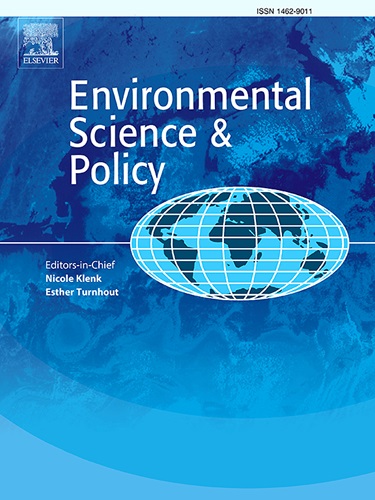将基于自然的解决方案纳入城市洪水风险和恢复力分析:领结和仙台框架方法
IF 5.2
2区 环境科学与生态学
Q1 ENVIRONMENTAL SCIENCES
引用次数: 0
摘要
洪水是城市地区的一个重要问题,它影响着人、资源和环境。气候变化和社会经济条件等因素增加了这些事件发生的频率和严重程度,需要采取有效的缓解和预防措施来减少其影响。2015年建立的《仙台减少灾害风险框架》(SFDRR)强调了基于科学证据和社区参与的风险管理的重要性,包括制定应对多种风险的城市规划政策。同年,联合国可持续发展目标(sdg)概述了建设有复原力社会的目标。本研究使用Bowtie方法建立了具有障碍的因果情景,以传达城市地区的洪水风险,并确定潜在的管理行动,以预防和减轻不利后果,在地方一级的行政管理,重点关注全球南方的现实。随着与水有关的灾害,特别是城市洪水变得越来越频繁,城市面临着气候变化和快速城市化带来的日益严重的威胁。结合结构性、非结构性和基于自然的解决方案,前瞻性措施对城市韧性至关重要。Bowtie方法通过清晰地概述风险要素之间的关系,同时帮助与利益相关者的沟通,促进了全面的风险评估。该分析同时考虑了SFDRR和可持续发展目标,深入了解了缓解洪水战略与全球复原力目标的一致性,并评估了在城市地区实施这些措施的可行性和影响。本文章由计算机程序翻译,如有差异,请以英文原文为准。
Integrating nature-based solutions into urban flood risk and resilience analysis: A bowtie and sendai framework approach
Floods represent a significant concern in urban areas, affecting people, resources, and the environment. Factors such as climate change and socioeconomic conditions increase the frequency and severity of these events, requiring effective mitigation and prevention measures to reduce their impacts. The Sendai Framework for Disaster Risk Reduction (SFDRR), established in 2015, emphasizes the importance of risk management based on scientific evidence and community participation, including developing urban planning policies that address multiple risks. That same year, the United Nations Sustainable Development Goals (SDGs) outlined objectives to build a resilient society. This research used the Bowtie method to establish cause-effect scenarios with barriers to communicate flood risks in urban areas and identify potential management actions to prevent and mitigate adverse consequences, at a local-level administration and focusing on the reality of Global South. As water-related disasters, particularly urban flooding, become more frequent, cities face escalating threats due to climate change and rapid urbanization. Combining structural, non-structural, and nature-based solutions, proactive measures are critical to urban resilience. The Bowtie method facilitated a comprehensive risk assessment by clearly outlining relationships between risk elements while aiding communication with stakeholders. This analysis considered both the SFDRR and the SDGs, offering insight into the alignment of flood mitigation strategies with global resilience objectives and evaluating the feasibility and impact of implementing these measures in urban areas.
求助全文
通过发布文献求助,成功后即可免费获取论文全文。
去求助
来源期刊

Environmental Science & Policy
环境科学-环境科学
CiteScore
10.90
自引率
8.30%
发文量
332
审稿时长
68 days
期刊介绍:
Environmental Science & Policy promotes communication among government, business and industry, academia, and non-governmental organisations who are instrumental in the solution of environmental problems. It also seeks to advance interdisciplinary research of policy relevance on environmental issues such as climate change, biodiversity, environmental pollution and wastes, renewable and non-renewable natural resources, sustainability, and the interactions among these issues. The journal emphasises the linkages between these environmental issues and social and economic issues such as production, transport, consumption, growth, demographic changes, well-being, and health. However, the subject coverage will not be restricted to these issues and the introduction of new dimensions will be encouraged.
 求助内容:
求助内容: 应助结果提醒方式:
应助结果提醒方式:


